알레르기 비염의 원인과 유발 인자, 혼합형 알레르기 비염, 통년성 알레르기 비염, 계절적 알레르기 비염, Causes, Induced factors, Combined allergic rhinitis, Perennial allergic rhinitis, Seasonal allergic rhinitis
- 다음 정보를 참조- www.drleepediatrics.com-제15권 소아청소년 알레르기 자가면역 질환-제 1-14 장제1-5장 : 알레르기 비염 (알러지성 비염/알레르기 비염)
- Please visit www.drleepediatrics.com-Volume 15 Pediatric and Adolescent Allergy and Autoimmune Diseases-chapter 제1-5장: Allergic rhinitis
알레르기 비염의 원인과 유발 인자
- 알레르기 비염을 일으킬 수 있는 항원을 알레르기 비염 유발인자라고 한다.
- 알레르기 비염을 유발시킬 수 있는 유발 인자에 관해 어느 정도 잘 알고 있지만 알레르기 비염 발병의 확실한 기전에 관해서는 확실히 모르는 점이 아직도 많다.
- 아토피 체질을 가진 아이들에게 알레르기 비염 발생률이 많다는 것은 잘 알려진 사실이다.
- 천식(기관지 천식)을 앓은 과거 병력이 있는 아이들의 90%에게 알레르기 비염이 유발될 수 있고 알레르기 비염이 잘 치료되면 천식도 자연적으로 잘 치료된다는 연구결과도 있다.
- 알레르기 비염을 앓는 아이들에게 천식이 생기는 발병빈도는 알레르기 비염이 없는 아이들에게 천식이 생기는 발병빈도보다 3배 이상 더 높다.
- 알레르기 비염을 앓는 아이들이 천식을 앓을 확률이 40%이다. (참고로 저자의 경험에 의하면 거의 80~90%이다.)
- 알레르기 비염과 천식은 IgE, 사이토카인, 히스타민, 류코트리엔 등의 매개체로 인해서 발병된다.
- 천식은 코르티코스테로이드제, 항히스타민제, 항류코트리엔제, 항 IgE제 등으로 치료될 수 있다.
- 또 알레르기 비염 역시 천식을 치료하는데 주로 쓰는 약물 성분이 든 알레르기 비염 치료 약물로 치료될 수 있다.
- 초목의 꽃가루, 곰팡이, 몰드, 개, 고양이, 소, 말, 닭, 새 등의 털이나 비듬, 깃털, 침, 죽은 곤충 가루, 집 먼지 진드기(집 먼지 좀 진드기), 집 먼지 등 항원이 비강 속으로 흡인될 때, 소화기를 통해 섭취된 우유, 달걀, 초콜릿 등의 음식물 항원으로 알레르기 비염이 유발될 수 있다.
- 예를 들면, 고양이 털, 비듬, 침 등이 비강 내로 직접 흡인될 때 알레르기 비염이 비강 내 점막층에 생길 수 있다.
- 비강 점막층이 고양이 털이나 비듬, 또는 침 등에 더 이상 접촉되지 않으면 고양이 털, 비듬, 침 등으로 알레르기 비염이 더 이상 유발되지 않는다.
- 그러나 비강 점막층이 고양이의 털, 침, 비듬 등에 또다시 접촉될 때 고양이 털, 침, 비듬 등 항원으로 알레르기 비염이 또다시 유발될 수 있다.
- 일상생활을 하는 중 피부, 기도, 위장관 등을 통하여 매일 접촉되는 집 먼지, 집 먼지 진드기(집먼지 좀 진드기), 음식물, 몰드, 또는 곰팡이 등의 항원으로 알레르기 비염이 가장 잘 유발될 수 있다.
- 그런 종류의 항원에 일 년 내내 접촉되는 아이들에게 알레르기 비염이 일 년 내내 생길 수 있는데 이런 종류의 알레르기 비염을 통년성 알레르기 비염이라 한다.
- 곰팡이, 몰드로 유발된 알레르기 비염이 있는 아이들이 곰팡이나 몰드가 자라지 않는 건조한 장소에서 가 있게 되면 곰팡이나, 몰드로 인한 알레르기 비염이 더 이상 유발되지 않거나 훨씬 덜 유발될 수 있다.
- 그러나 알레르기 비염이 있던 아이들이 곰팡이나 몰드가 자라는 습한 장소에 다시 가면 곰팡이나 몰드에 의해 알레르기 비염이 또 다시 유발될 수 있다. 이런 알레르기 비염을 몰드나 곰팡이 유발 알레르기 비염이라고 한다.
- 곰팡이나 몰드로 유발되는 알레르기 비염의 증상 징후는 여름철과 같이 곰팡이나 몰드가 자라기에 적절한 계절에 더 심해질 수 있다.
- 아카시아 화분으로 알레르기 비염이 생기는 아이들은 아카시아 꽃이 만발하는 오뉴월에 아카시아 화분 알레르기 비염이 유발될 수 있다. 이와 같이 계절에 따라 생기는 알레르기 비염을 계절적 알레르기 비염이라고 한다.
- 많은 아이들에게 계절적 알레르기 비염도 유발되고 통년성 알레르기 비염이 함께 유발되는 것이 보통이다. 이런 알레르기 비염을 혼합형 알레르기 비염이라고 한다.
- 일반적으로, 바이러스성 상기도 감염병에 걸리거나 스트레스를 보통 이상으로 더 많이 받을 때 알레르기 비염의 증상 징후가 더 심해질 수 있다. 또 더 많은 종류의 항원들에 동시 노출될 때 그 증상 징후가 더 심해질 수 있다.
- 요약하면 알레르기 비염을 일 년 중 어느 계절에 더 생기느냐에 따라 통년성 알레르기 비염, 계절적 알레르기 비염, 혼합형 알레르기 비염으로 나눌 수 있다.
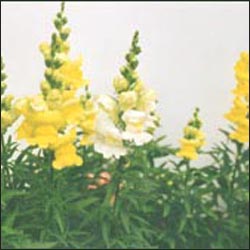
사진 76-1. 화분 항원으로 알레르기 비염이 유발될 수 있다.
Copyright ⓒ 2011 John Sangwon Lee, MD., FAAP
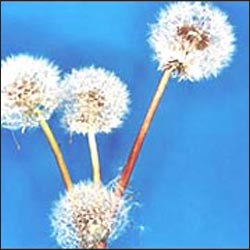
사진 82. 레그위드나 풀씨로 알레르기 비염이 유발될 수 있다.
Copyright ⓒ 2011 John Sangwon Lee, MD., FAAP
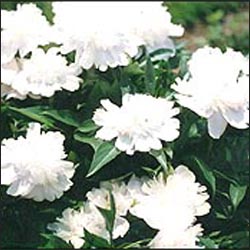
사진 76. 화분 항원으로 알레르기 비염이 유발될 수 있다.
Copyright ⓒ 2011 John Sangwon Lee, MD., FAAP
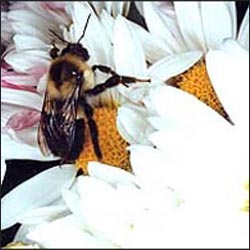
사진 79. 화분 항원으로 알레르기 비염이 유발될 수 있다.
Copyright ⓒ 2011 John Sangwon Lee, MD., FAAP
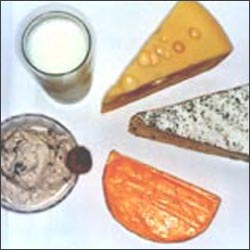
사진 85. 달걀, 우유 음식물로 알레르기 비염이 유발될 수 있다.
Copyright ⓒ 2011 John Sangwon Lee, MD., FAAP
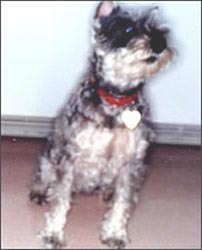
사진 86. 개, 고양이 등 애완동물의 털, 비듬, 침으로도 알레르기 비염이 유발될 수 있다.
Copyright ⓒ 2011 John Sangwon Lee, MD., FAAP
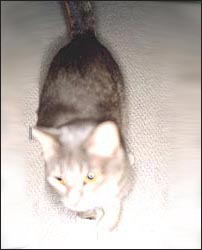
사진 87. 고양, 개 등 애완동물의 털, 비듬, 침으로 알레르기 비염이 유발될 수 있다.
Copyright ⓒ 2011 John Sangwon Lee, MD., FAAP
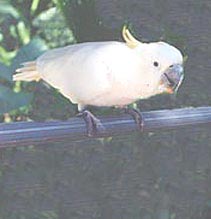
사진 88. 새의 깃털로 알레르기 비염이 유발될 수 있다.
Copyright ⓒ 2011 John Sangwon Lee, MD., FAAP
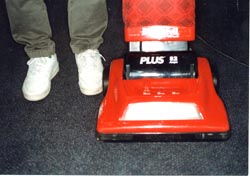
사진 89. 집 먼지 진드기(집 먼지 좀 진드기) 나 집 먼지로도 알레르기 비염이 유발될 수 있다.
Copyright ⓒ 2011 John Sangwon Lee, MD., FAAP
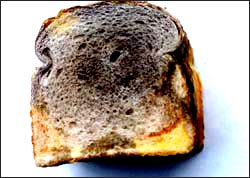
사진 90. 지하실 등 습한 집안 곳곳에서 곰팡이나 몰드가 자라고 음식물 곰팡이로 인해서도 알레르기 비염이 유발될 수 있다.
Copyright ⓒ 2011 John Sangwon Lee, MD., FAAP

사진 91. 새의 깃털로 만든 베개나 이불로 알레르기 비염이 유발될 수 있다.
Copyright ⓒ 2011 John Sangwon Lee, MD., FAAP
Causes, Induced factors, Combined allergic rhinitis, Perennial allergic rhinitis, Seasonal allergic rhinitis
• See the following information – www.drleepediatrics.com – Volume 15 Children and Adolescent Allergic Autoimmune Diseases – Chapters 1-14 Chapters 1-5: Allergic Rhinitis (Allergic Rhinitis/Allergic Rhinitis)
• Please visit www.drleepediatrics.com-Volume 15 Pediatric and Adolescent Allergy and Autoimmune Diseases-chapter Chapters 1-5: Allergic rhinitis Causes and triggers of allergic rhinitis
• Allergens that can cause allergic rhinitis are called allergic rhinitis triggers.
• Although we have some knowledge about the triggers that can trigger allergic rhinitis, there are still many unknowns about the definitive mechanism of allergic rhinitis.
• It is a well-known fact that children with atopic constitution have a high incidence of allergic rhinitis.
• Studies have shown that 90% of children with a history of asthma (bronchial asthma) can develop allergic rhinitis, and that if the allergic rhinitis is treated well, asthma will be cured naturally.
• The incidence of asthma in children with allergic rhinitis is three times higher than that in children without allergic rhinitis.
• Children with allergic rhinitis have a 40% chance of developing asthma. (For reference, according to the author’s experience, it is almost 80-90%.)
• Allergic rhinitis and asthma are caused by mediators such as IgE, cytokines, histamine, and leukotriene.
• Asthma can be treated with corticosteroids, antihistamines, anti-leukotrienes, and anti-IgE drugs.
• Allergic rhinitis can also be treated with medications used to treat asthma.
• Antigens such as plant pollen, mold, mold, dog, cat, cow, horse, chicken, and bird hair, dander, feathers, saliva, dead insect powder, house dust mite (house dust mite), house dust, etc. When inhaled, allergic rhinitis can be caused by food allergens such as milk, eggs, and chocolate ingested through the digestive tract.
• For example, when cat hair, dander, saliva, etc. are directly inhaled into the nasal cavity, allergic rhinitis may develop in the nasal mucosa.
• When the nasal mucosa is no longer in contact with cat hair, dander, or saliva, allergic rhinitis is no longer caused by cat hair, dander, or saliva.
• However, when the nasal mucosal layer comes into contact with cat fur, saliva, and dander again, allergic rhinitis may be triggered again by antigens such as cat hair, saliva, and dander.
• Allergens such as house dust, house dust mites (house dust mites), food, mold, or mold that are in daily contact through the skin, respiratory tract, and gastrointestinal tract during daily living can cause allergic rhinitis the most.
• Allergic rhinitis can develop year-round in children exposed to allergens of this type year-round. This type of allergic rhinitis is called perennial allergic rhinitis. • If children with mold or mold-induced allergic rhinitis are left in dry places where mold or mold does not grow, mold or mold-induced allergic rhinitis may no longer occur or be much less likely.
• However, if children who have had allergic rhinitis go back to a humid place where mold or mold grows, the mold or mold can cause allergic rhinitis again. This type of allergic rhinitis is called a mold or mold-induced allergic rhinitis.
• Symptoms of mold or mold-induced allergic rhinitis may be more severe during the appropriate season for mold or mold growth, such as summer.
• Children who develop allergic rhinitis due to acacia pollen may develop acacia pollen allergic rhinitis in August when acacia flowers are in full bloom. Seasonal allergic rhinitis is called seasonal allergic rhinitis.
• Many children also develop seasonal allergic rhinitis and perennial allergic rhinitis. This type of allergic rhinitis is called mixed allergic rhinitis.
• In general, symptoms of allergic rhinitis may be more severe when you have a viral upper respiratory infection or are under more than normal stress. In addition, the symptoms may become more severe when exposed to more types of antigens at the same time.
• In summary, allergic rhinitis can be divided into perennial allergic rhinitis, seasonal allergic rhinitis, and mixed allergic rhinitis according to which season of the year occurs more frequently.

Picture 76-1. Pollen antigen can cause allergic rhinitis. Copyright ⓒ 2011 John Sangwon Lee, MD., FAAP

Photo 82. Allergic rhinitis can be caused by legweed or grass seeds. Copyright ⓒ 2011 John Sangwon Lee, MD., FAAP

Picture 76. Pollen antigen can cause allergic rhinitis. Copyright ⓒ 2011 John Sangwon Lee, MD., FAAP

Picture 79. Pollen antigen can cause allergic rhinitis. Copyright ⓒ 2011 John Sangwon Lee, MD., FAAP Picture

85. Eggs and milk can cause allergic rhinitis. Copyright ⓒ 2011 John Sangwon Lee, MD., FAAP

Photo 86. Allergic rhinitis can also be caused by the fur, dander, and saliva of pets such as dogs and cats. Copyright ⓒ 2011 John Sangwon Lee, MD., FAAP

Photo 87. Allergic rhinitis can be caused by the fur, dander, and saliva of pets such as cats and dogs. Copyright ⓒ 2011 John Sangwon Lee, MD., FAAP

Picture 88. Bird feathers can cause allergic rhinitis. Copyright ⓒ 2011 John Sangwon Lee, MD., FAAP

Picture 89. House dust mites (house dust mites) or house dust can also cause allergic rhinitis. Copyright ⓒ 2011 John Sangwon Lee, MD., FAAP

Photo 90. Mold or mold grows in damp places such as the basement, and food mold can also cause allergic rhinitis. Copyright ⓒ 2011 John Sangwon Lee, MD., FAAP

Photo 91. Allergic rhinitis can be triggered by pillows or duvets made of bird feathers. Copyright ⓒ 2011 John Sangwon Lee, MD., FAAP
출처 및 참조 문헌 Sources and references
- NelsonTextbook of Pediatrics 22ND Ed
- The Harriet Lane Handbook 22ND Ed
- Growth and development of the children
- Red Book 32nd Ed 2021-2024
- Neonatal Resuscitation, American Academy Pediatrics
- www.drleepediatrics.com 제1권 소아청소년 응급 의료
- www.drleepediatrics.com 제2권 소아청소년 예방
- www.drleepediatrics.com 제3권 소아청소년 성장 발육 육아
- www.drleepediatrics.com 제4권 모유,모유수유, 이유
- www.drleepediatrics.com 제5권 인공영양, 우유, 이유식, 비타민, 미네랄, 단백질, 탄수화물, 지방
- www.drleepediatrics.com 제6권 신생아 성장 발육 육아 질병
- www.drleepediatrics.com제7권 소아청소년 감염병
- www.drleepediatrics.com제8권 소아청소년 호흡기 질환
- www.drleepediatrics.com제9권 소아청소년 소화기 질환
- www.drleepediatrics.com제10권. 소아청소년 신장 비뇨 생식기 질환
- www.drleepediatrics.com제11권. 소아청소년 심장 혈관계 질환
- www.drleepediatrics.com제12권. 소아청소년 신경 정신 질환, 행동 수면 문제
- www.drleepediatrics.com제13권. 소아청소년 혈액, 림프, 종양 질환
- www.drleepediatrics.com제14권. 소아청소년 내분비, 유전, 염색체, 대사, 희귀병
- www.drleepediatrics.com제15권. 소아청소년 알레르기, 자가 면역질환
- www.drleepediatrics.com제16권. 소아청소년 정형외과 질환
- www.drleepediatrics.com제17권. 소아청소년 피부 질환
- www.drleepediatrics.com제18권. 소아청소년 이비인후(귀 코 인두 후두) 질환
- www.drleepediatrics.com제19권. 소아청소년 안과 (눈)질환
- www.drleepediatrics.com 제20권 소아청소년 이 (치아)질환
- www.drleepediatrics.com 제21권 소아청소년 가정 학교 간호
- www.drleepediatrics.com 제22권 아들 딸 이렇게 사랑해 키우세요
- www.drleepediatrics.com 제23권 사춘기 아이들의 성장 발육 질병
- www.drleepediatrics.com 제24권 소아청소년 성교육
- www.drleepediatrics.com 제25권 임신, 분만, 출산, 신생아 돌보기
- Red book 29th-31st edition 2021
- Nelson Text Book of Pediatrics 19th- 21st Edition
- The Johns Hopkins Hospital, The Harriet Lane Handbook, 22nd edition
- 응급환자관리 정담미디어
- Pediatric Nutritional Handbook American Academy of Pediatrics
- 소아가정간호백과–부모도 반의사가 되어야 한다, 이상원 저
- The pregnancy Bible. By Joan stone, MD. Keith Eddleman, MD
- Neonatology Jeffrey J. Pomerance, C. Joan Richardson
- Preparation for Birth. Beverly Savage and Dianna Smith
- 임신에서 신생아 돌보기까지. 이상원
- Breastfeeding. by Ruth Lawrence and Robert Lawrence
- Sources and references on Growth, Development, Cares, and Diseases of Newborn Infants
- Emergency Medical Service for Children, By Ross Lab. May 1989. p.10
- Emergency care, Harvey Grant and Robert Murray
- Emergency Care Transportation of Sick and Injured American Academy of Orthopaedic Surgeons
- Emergency Pediatrics A Guide to Ambulatory Care, Roger M. Barkin, Peter Rosen
- Quick Reference To Pediatric Emergencies, Delmer J. Pascoe, M.D., Moses Grossman, M.D. with 26 contributors
- Neonatal resuscitation Ameican academy of pediatrics
- Pediatric Nutritional Handbook American Academy of Pediatrics
- Pediatric Resuscitation Pediatric Clinics of North America, Stephen M. Schexnayder, M.D.
-
Pediatric Critical Care, Pediatric Clinics of North America, James P. Orlowski, M.D.
-
Preparation for Birth. Beverly Savage and Dianna Smith
-
Infectious disease of children, Saul Krugman, Samuel L Katz, Ann A.
- 제4권 모유, 모유수유, 이유 참조문헌 및 출처
- 제5권 인공영양, 우유, 이유, 비타민, 단백질, 지방 탄수 화물 참조문헌 및 출처
- 제6권 신생아 성장발육 양호 질병 참조문헌 및 출처
- 소아과학 대한교과서
Copyright ⓒ 2014 John Sangwon Lee, MD., FAAP
“부모도 반의사가 되어야 한다”-내용은 여러분들의 의사로부터 얻은 정보와 진료를 대신할 수 없습니다.
“The information contained in this publication should not be used as a substitute for the medical care and advice of your doctor. There may be variations in treatment that your doctor may recommend based on individual facts and circumstances.
“Parental education is the best medicine.